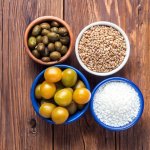It's cold out and I don't have garden herbs. I have some herbs growing indoors but not everything I need. So, I have been buying them at the store.
They don't last long at all! They're good maybe for 2-3 days but then I have to toss them. Any advice on how to keep them fresh or maybe even preserve them so I get the fresh taste still without relying on the fridge? People have told me to try freezing them and that didn't work - they got a freezer taste and got all mushy in the freezer (it was gross!).
They don't last long at all! They're good maybe for 2-3 days but then I have to toss them. Any advice on how to keep them fresh or maybe even preserve them so I get the fresh taste still without relying on the fridge? People have told me to try freezing them and that didn't work - they got a freezer taste and got all mushy in the freezer (it was gross!).



